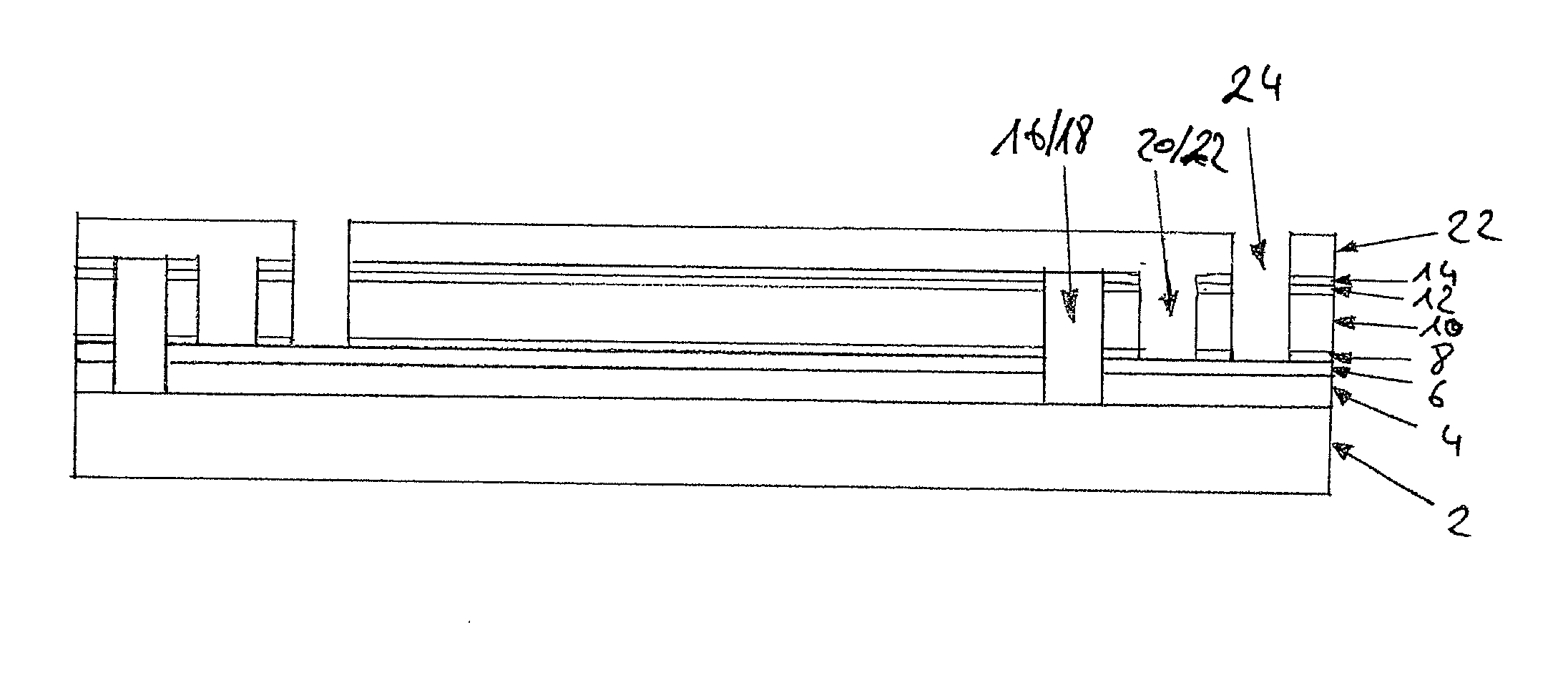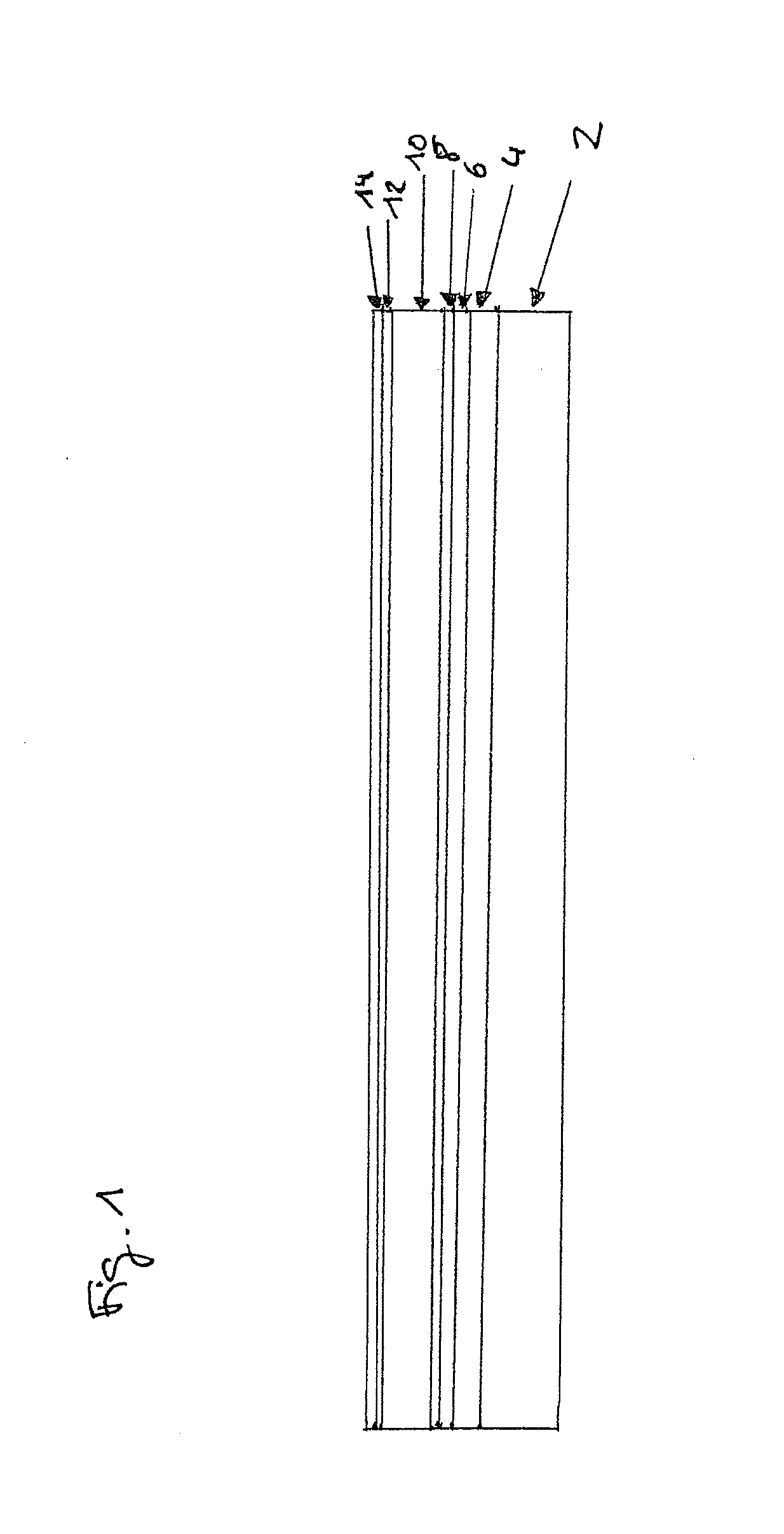Method for manufacturing thin-film solar modules, and thin-film solar modules which are obtainable according to this method
a technology of solar modules and solar cells, which is applied in the field of manufacturing photovoltaic thin-film solar modules and thin-film solar modules, can solve the problems of inability to exclude components, dopants, impurities, and contamination or interdiffusion of components, and achieves the effect of shortening the line distance, increasing the active surface area, and increasing the efficiency of thin-film solar modules
- Summary
- Abstract
- Description
- Claims
- Application Information
AI Technical Summary
Benefits of technology
Problems solved by technology
Method used
Image
Examples
Embodiment Construction
[0070]FIG. 1 shows a schematic cross-sectional view of an intermediate manufacturing stage 1a of a thin-film solar module 1 according to the present invention. A bulk back electrode layer 4 made of molybdenum and provided with the aid of thin-film deposition is present on glass substrate 2. The bulk back electrode layer is adjoined by a bidirectional reflective barrier layer 6 made of TiN or ZrN, for example, which likewise may be obtained with the aid of thin-film deposition. In the illustrated specific embodiment, an ohmic contact layer 8 made of a metal chalcogenide such as molybdenum selenide is situated on barrier layer 6. This contact layer may be obtained in various ways. In one embodiment, for example, molybdenum selenide from a molybdenum selenide target has been sputtered on. Alternatively, initially a metal layer may be applied which is subsequently converted into the corresponding metal chalcogenide before and / or during the formation of the semiconductor absorber layer. ...
PUM
 Login to View More
Login to View More Abstract
Description
Claims
Application Information
 Login to View More
Login to View More - R&D
- Intellectual Property
- Life Sciences
- Materials
- Tech Scout
- Unparalleled Data Quality
- Higher Quality Content
- 60% Fewer Hallucinations
Browse by: Latest US Patents, China's latest patents, Technical Efficacy Thesaurus, Application Domain, Technology Topic, Popular Technical Reports.
© 2025 PatSnap. All rights reserved.Legal|Privacy policy|Modern Slavery Act Transparency Statement|Sitemap|About US| Contact US: help@patsnap.com



